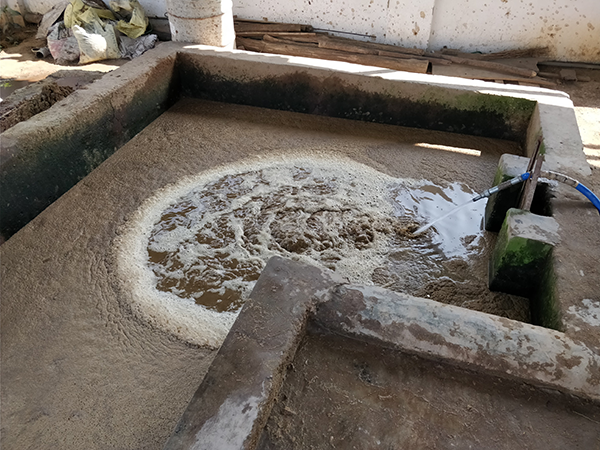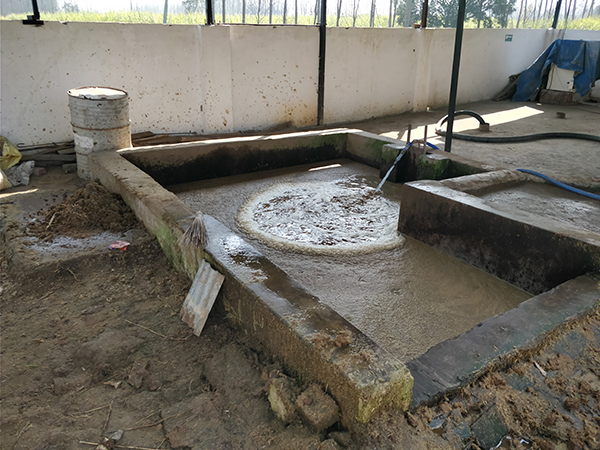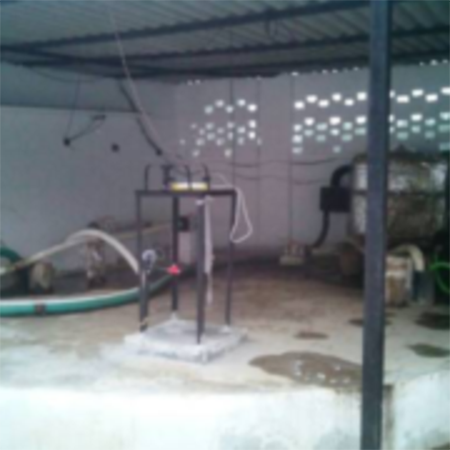Anaerobic Microbial Inoculum
INNOVATIVE APPROACH TO ORGANIC WASTE TREATMENT
Aerobic treatment of organic waste is much simpler approach with respect to isolation of desired bacteria, screening for hydrolysis, production of enzymes and formulation, thus hundreds of psychotropic (cold tolerant) bacteria were isolated from Antarctica and other places. However, the process is energy intensive, generates lot of sludge and not viable in subzero temperature and low capacity applications. Also it is highly improbable to maintain unfrozen conditions in an aerobic digester. Hence, the process of anaerobic bio-degradation was chosen to develop the technology for high altitude applications including glaciers.
Anaerobic digestion (Bio-Methanation) is an age old technology and is practiced mostly for Bio-gas production. Methane generation from organic matter is very well documented in nature in wide temperature range employing Psychrophilic, Mesophilic or Thermophilic bacteria.
Anaerobic digestion (Bio-Methanation) is an age old technology and is practiced mostly for Bio-gas production. Methane generation from organic matter is very well documented in nature in wide temperature range employing Psychrophilic, Mesophilic or Thermophilic bacteria.


Psychrophilic Methanogenesis is a very slow process and has a limited practical utility due to longer hydraulic retention times like 100 days or more. In addition, there is a requirement of large volume fermenters.
Bio-Methanation process involves large number of bacteria belonging to 4 groups (Hydrolytic, Acidogenetic, Acetogenic and Methanogenic) some of them being obligate anaerobe and some being interdependent on each other (Symbiotics) for existence in the process. An equilibrium is required to be maintained in different steps for process to be sustainable or it leads to digester souring. Hence type of bacteria, their numbers and their susceptibility to climate, metabolites and toxicants are the key factors.
In view of developing technology for broad climatic conditions and situations, anaerobic microbial consortium was developed by following multiple process approach.
Bio-Methanation process involves large number of bacteria belonging to 4 groups (Hydrolytic, Acidogenetic, Acetogenic and Methanogenic) some of them being obligate anaerobe and some being interdependent on each other (Symbiotics) for existence in the process. An equilibrium is required to be maintained in different steps for process to be sustainable or it leads to digester souring. Hence type of bacteria, their numbers and their susceptibility to climate, metabolites and toxicants are the key factors.
In view of developing technology for broad climatic conditions and situations, anaerobic microbial consortium was developed by following multiple process approach.
The slurries (sludge) from 5 Bio-gas plants in hilly region being fed with cow dung, kitchen waste and agricultural wastes were used as raw material for bio-degradation of human waste at 20oC and the best (kitchen waste + cow dung) was selected. It was gradually applied at low temperature by decreasing the temperature of fermenters @ 2oC upto 10oC and 1oC upto 5oC at 3 months interval. The thorough analysis of fermenting human waste was performed at 5oC and 10oC for pH, Bio-gas quantity, methane content, H2S, CO2, volatile fatty acids, microbial counts and hydrolytic enzymes.
There had been accumulation of Acetate, Propionate and Butyrate besides faster slow down of Proteolysis itself at low temperature. The reactor was bio augmented with bacteria enriched separately in the presence of specific substrate at 5oC along with Proteolytics of low temperature habitat.
Eventually DRDO developed anaerobic microbial consortium that has been characterized for fermentation efficiency (5 to 45oC), temperature fluctuation (diurnal, weekly, monthly), organic loading, starvation, freeze-thaw damages etc. and is proved to work in broader practical/climatic conditions. The inoculum is being maintained at 10oC in 14 and 70 m3 reactors at Defence R&D Establishment, Gwalior.
There had been accumulation of Acetate, Propionate and Butyrate besides faster slow down of Proteolysis itself at low temperature. The reactor was bio augmented with bacteria enriched separately in the presence of specific substrate at 5oC along with Proteolytics of low temperature habitat.
Eventually DRDO developed anaerobic microbial consortium that has been characterized for fermentation efficiency (5 to 45oC), temperature fluctuation (diurnal, weekly, monthly), organic loading, starvation, freeze-thaw damages etc. and is proved to work in broader practical/climatic conditions. The inoculum is being maintained at 10oC in 14 and 70 m3 reactors at Defence R&D Establishment, Gwalior.

